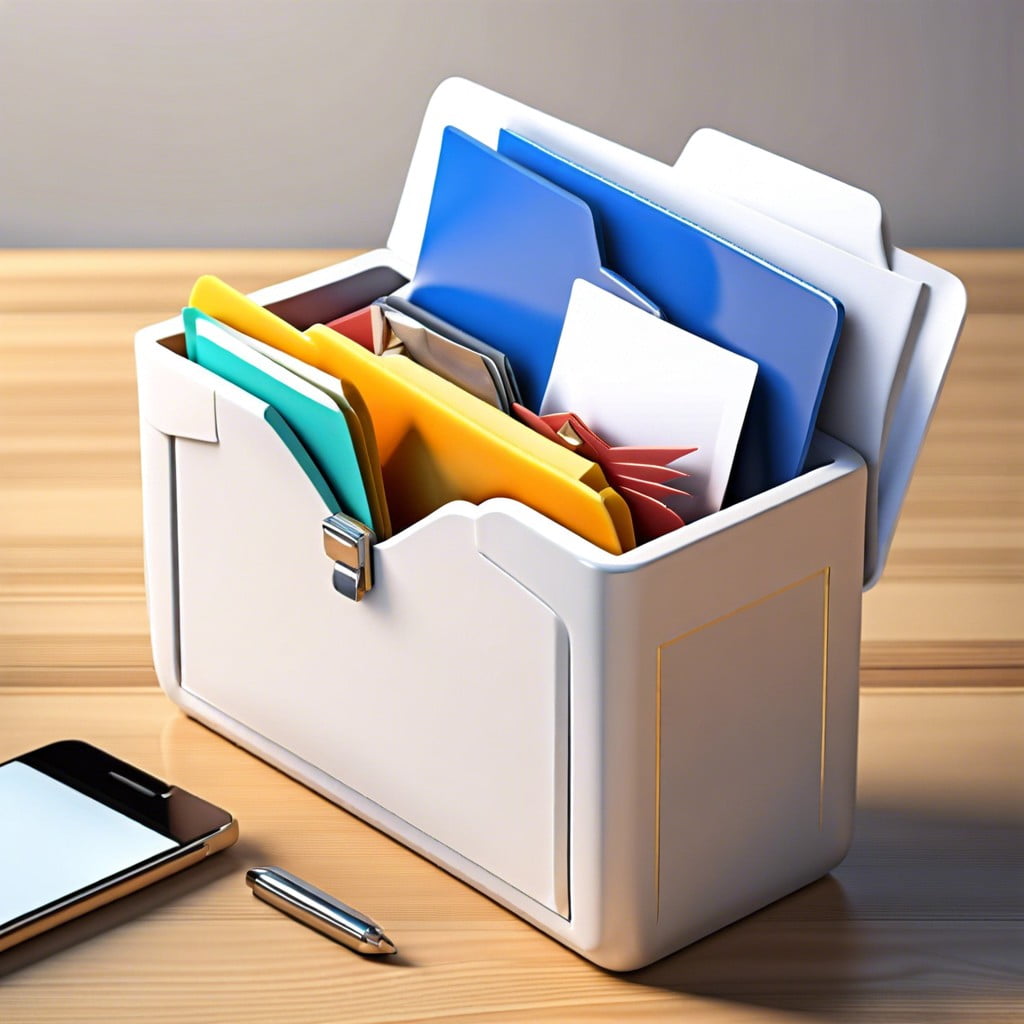Last updated on
Learn how to declutter your email inbox efficiently with straightforward steps that cut through the chaos and save your sanity.
Key takeaways:
- Set specific times for checking emails to avoid productivity loss.
- Utilize email management tools like SaneBox and Mailstrom for organization.
- Unsubscribe from unwanted newsletters to declutter your inbox.
- Choose between archiving and deleting emails based on future usefulness.
- Automate emails with filters and rules to efficiently manage incoming messages.
Table of Contents
Strategies for Regular Email Checking

To keep your inbox at bay, set specific times each day for checking emails. Instead of being a slave to the “ping,” try morning, midday, and before closing off for the day. This routine helps prevent the inbox from becoming a black hole of productivity.
Quickly skim through new emails during these designated times, and decide immediately—reply, delete, or delegate. This immediate action prevents buildup and keeps you from re-reading the same emails multiple times, which is about as fun as stepping on Lego barefoot.
Remember, not every email requires a novel-length response. Sometimes, a simple “Got it, thanks!” is enough. This keeps your responses brief and to the point, which is appreciated on both ends. Your future self will thank you for not clogging your own inbox!
Utilizing Email Management Tools
Email management tools are a godsend for keeping your inbox neat without breaking a sweat. Think of them as the digital equivalent of a personal assistant who loves to organize. Programs like SaneBox, Unroll.Me, and Mailstrom can quickly become your inbox’s new best friends. These tools sort your emails into easily manageable categories, helping you prioritize what needs your attention.
For starters, SaneBox distinguishes between critical emails and less important ones, cleverly moving the latter out of your way into a separate folder. Unroll.Me brings its own charm by allowing you to unsubscribe from unwanted newsletters in a jiffy or compile them into a single daily digest email. Mailstrom offers the joy of bulk handling – delete, archive, or organize hundreds of emails with just a few clicks.
Harness these tools and watch your inbox shrink to size, making the daily dive into your email a less daunting and more delightful task.
Streamlining Subscriptions and Unsubscribing
Drowning in a sea of promotional emails? It’s time to get your lifeboat ready. First, carve out some time to sift through your inbox with the single goal of spotting those sneaky subscription emails. Many of them are like uninvited party guests—they just keep showing up!
Next, wield the power of the unsubscribe link. Usually lurking at the bottom of the email, this little link is your ticket to decluttered email bliss. Click it with the satisfaction of swatting an annoying fly.
If decision fatigue hits or you’re feeling sentimental about a particular newsletter, consider using email management apps. These apps group subscriptions so you can unsubscribe in bulk, giving you minimum hassle and maximum satisfaction.
Remember, every unsubscribe click is a step towards a cleaner, more manageable inbox. Your future self will thank you for the breathing room—and fewer distractions mean more productivity (or more time for cat videos, your choice)!
Archiving Vs. Deleting: Best Practices
Deciding whether to archive or delete emails can feel like choosing between saving a souvenir or tossing clutter. Here’s a helpful breakdown:
Archiving is your go-to for emails you might want to revisit. It’s the digital equivalent of stowing away old love letters in the attic. This option keeps your mailbox clean without permanently erasing memories (or important info).
Deleting, on the other hand, should be reserved for the clear-out squad. These are emails you’re sure won’t be needed in the future. Think spam, promotional offers past their expiry date, or that random newsletter you never signed up for.
- To keep your mailbox functional and uncluttered:
- Regularly review and clear out emails that no longer serve a purpose.
- Use the archive function for emails containing information that may be useful down the line, such as receipts or booking confirmations.
This approach not only frees up space but also makes it easier to navigate and find emails when you need them. Keep your digital space tidy and decision-making simple—archive or delete.
Automating Emails With Filters and Rules
Imagine your email as a bustling city traffic system. Now, wouldn’t it be great if you could set traffic lights to manage the flow automatically? That’s what email filters and rules do for your inbox.
Start by creating filters that automatically categorize incoming emails based on sender, subject line, or keywords. For instance, all newsletters can go straight to a “Read Later” folder, while emails from your boss can be flagged as important.
Rules can be a game-changer, too. Set them up to forward emails from specific senders to a colleague when you’re on vacation, or to mark messages as read when they come from a known advertiser.
Also, don’t overlook the power of combining filters and rules. For example, you can create a rule that any email containing the word “sale” bypasses your primary inbox but gets stored in a “Deals” folder for leisurely browsing on weekends.
By automating these elements, you reclaim time and reduce inbox clutter without losing track of important messages. Plus, managing your email becomes less of a chore and more like overseeing a well-oiled machine.




